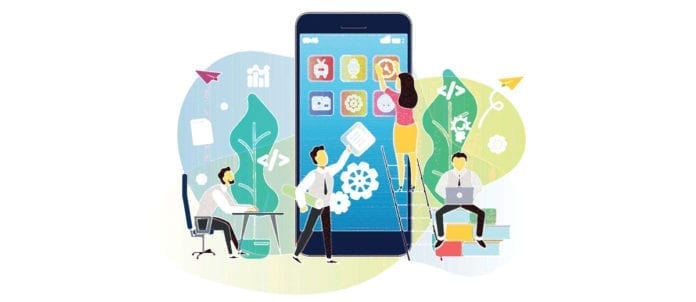It wasn’t that long ago that a restaurant “app” meant a pre-meal favourite such as Buffalo wings or nachos. But, as mobile devices have grown in popularity, the word “app” has taken on new meaning.
Apps can be a valuable tool for restaurant operators, enabling them to showcase menu items, handle reservations and answer questions about hours/location. Configured correctly, apps can perform more complex functions such as online ordering and delivery, managing loyalty programs or sending push notifications to potential customers.
Yet research shows only a fraction of apps, regardless of category, boast the “stickiness” required to keep users coming back.
In an analysis of the user base for 37,000 apps spanning multiple sectors, U.S. research firm Localytics found 23 per cent of users abandon an app after just one use, while 62 per cent use an app less than 11 times.
“Restaurants have to think about the user and why they would keep the app if they’re not getting more than just the menu,” says Jagdish Repaswal, founder and CEO of HeyMojo.com, a New York-based company specializing in marketing-automation solutions for restaurants.
While operators can create a bare-bones app for as little as $500, Repaswal says layering on key functions — such as location-based services, payment and loyalty programs — can easily push costs well north of $500,000.
The catch for operators is that while those are the types of functions that attract and retain users, they also push them further away from core competencies.
“The app has no value unless you can get people to install it. [Then] you have the costs to build and market the app, as well as the cost of retention and engagement,” says Repaswal.
While all of the major foodservice chains, including McDonald’s, Swiss Chalet and Domino’s, have a presence on iOS and Android platforms, Canadian operators appear lukewarm on apps.
According to a 2017 Restaurants Canada survey, only 26 per cent currently offer loyalty programs through either point-of-sale or mobile apps, while just 16 per cent accept orders via app and 13 per cent accept payments. Many have hailed the Starbucks app as the gold standard of Canadian foodservice apps. It has more than one-million users and accounts for about 18 per cent of its in-store transactions.
Cindy Liu, forecasting analyst with research firm eMarketer, attributes the app’s success to functions such as mobile order ahead, plus its strong ties to the chain’s rewards program.
Loyalty programs are a key driver for app downloading and retention. In a U.K. study of approximately 2,000 people, 65 per cent of respondents said they’d be willing to download a restaurant app to access special offers/deals and 80 per cent said they would return to a restaurant to collect the benefits from in-app loyalty programs.
The study also noted that while many restaurants have a presence on directory services, such as Just Eat or Urban Spoon, they cede control of the customer relationship to those services. “A competitive restaurant needs to offer the convenience of an online directory [while] maintaining ownership of its customer relationship,” the study concluded.
Domino’s excels at customer relationships — its app is an island of cool in a sea of mediocrity, offering users a combination of utility and fun. The app has more than 74,000 reviews on the Canadian Apple store, where it’s averaging 4.5-stars out of five and has earned praise for everything from its convenience to its 50-per-cent off all pizzas code. Done correctly, apps have the potential to help operators and drive sales. But high development costs and relatively low customer engagement mean it might be best to stick with tried-and-true app favourites — such as wings and rings.
Written by Chris Powell


















